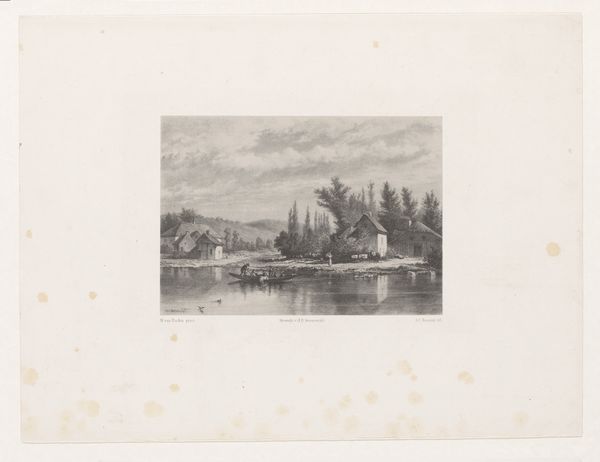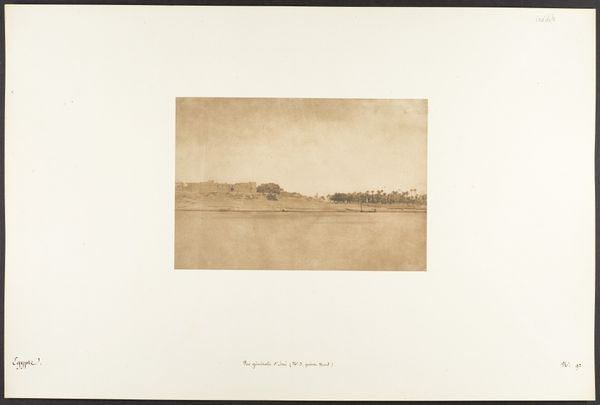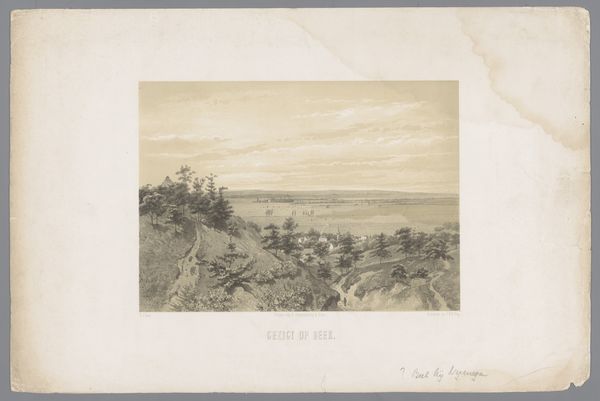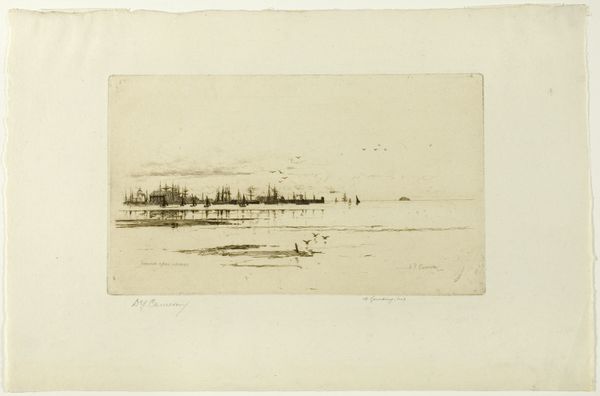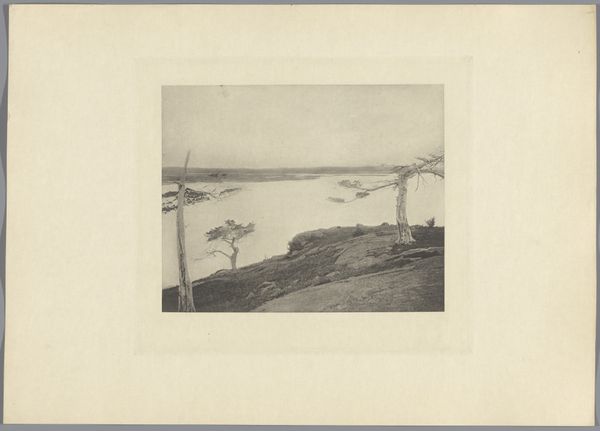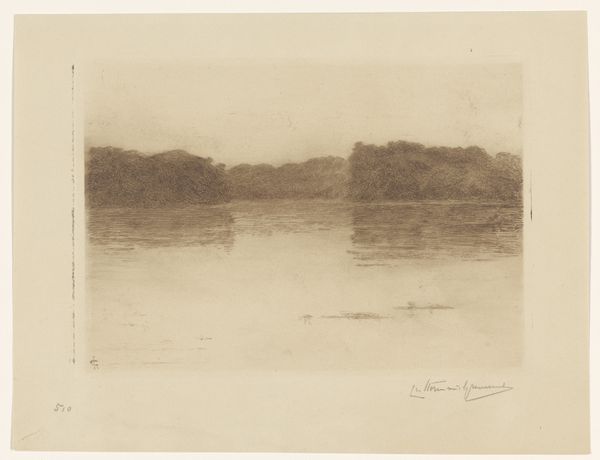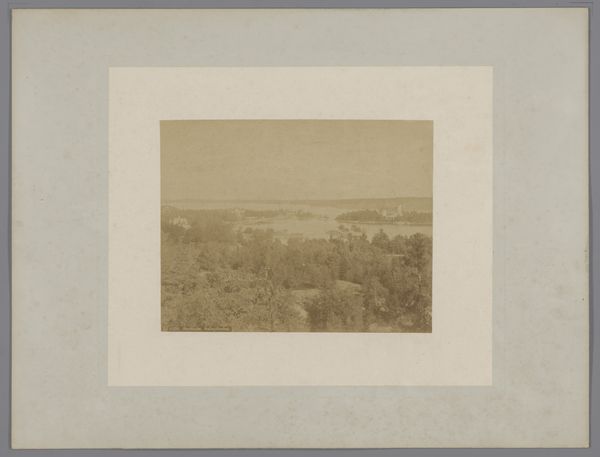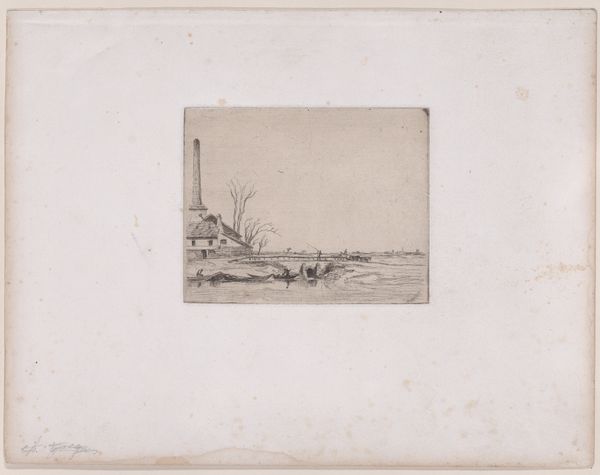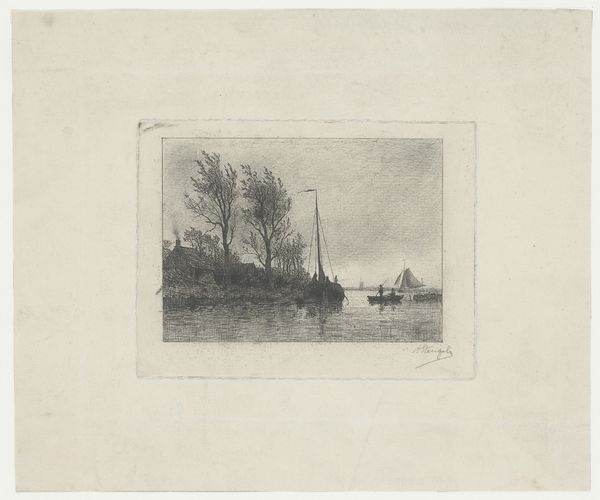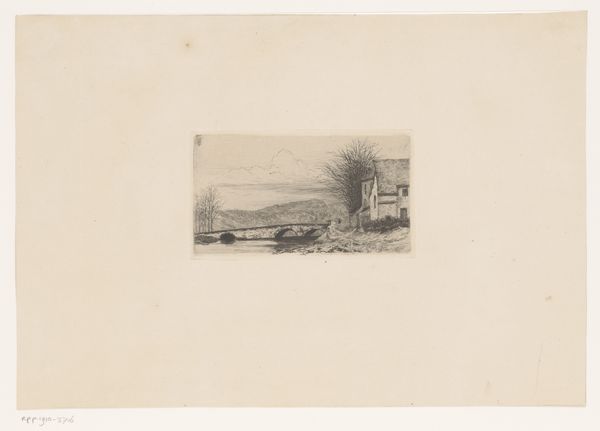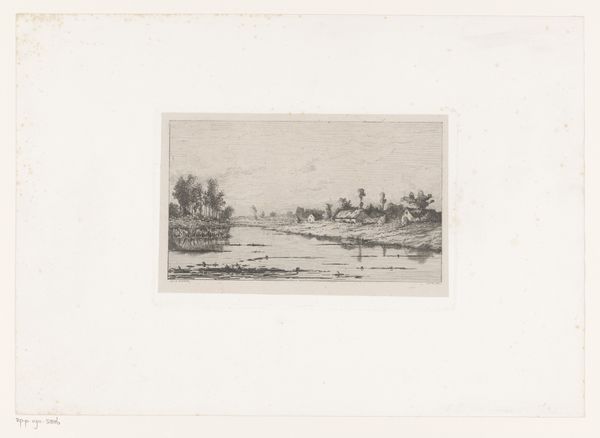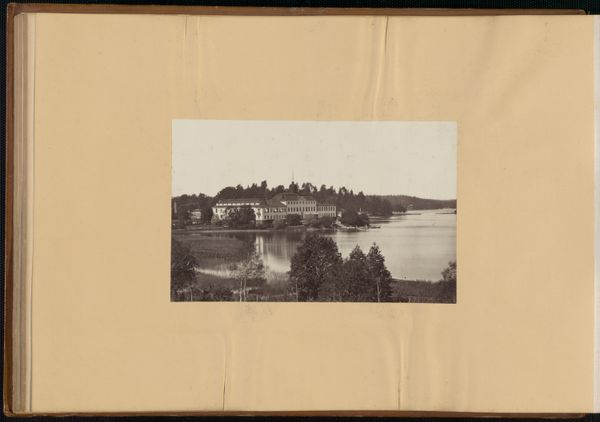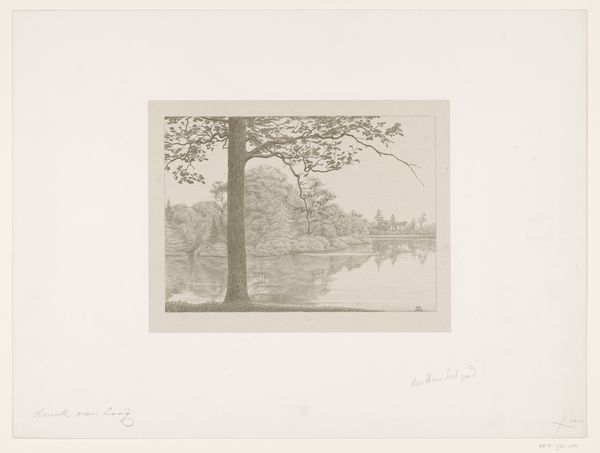
photography
#
pictorialism
#
landscape
#
photography
#
realism
Dimensions: height 100 mm, width 158 mm, height 205 mm, width 253 mm
Copyright: Rijks Museum: Open Domain
Curator: Here we have Albert Greiner’s photograph, “Overstroming in Nieuwkuijk,” taken between 1880 and 1881. It depicts a flooded landscape. Editor: The atmosphere is incredibly somber, isn't it? The water reflects the sky, creating a sense of unending grayness. Curator: Indeed. And if we consider the process: photography in this era was hardly instant, each print was carefully considered. The tonal range achieved in the photographic print signals the photographer's understanding of materials. Notice how he frames and emphasizes the stark reality of the flooding on the built structures and environment. Editor: The tiny figures on the raised piece of land almost seem to symbolize humanity’s smallness in the face of nature’s power, do you agree? Almost like looking at it through memory’s faded lens... it really drives home this overwhelming sense of vulnerability and quiet resignation. I can imagine how frightening it must have been. Curator: Perhaps. Pictorialism aimed to elevate photography to the level of high art through painterly effects. Looking at the labor to create a print with so much depth indicates photography as another form of creative expression and communication equal to that of painting. Editor: I like that thought! But there is also something quite unsettling in its stillness; a silent scream if I may. That solitary tree leaning to the side...like a warning from Mother Nature herself. This is not your typical picturesque landscape but reality! Curator: A moment captured with clear intention and skillful photographic technique during what was no doubt a devastating event. It reminds us that such images were material evidence, providing documents of social upheaval during a period of profound climate shifts, the Little Ice Age in effect during much of the 1800's. Editor: You know, pondering over it now, maybe it isn't so much somber, but more a meditation on resilience and endurance, don't you think? Even in a state of quiet stillness the community endures, that's hopeful. Curator: I think that's an elegant and perceptive view. Examining it through that lens shows how materiality documents moments of difficulty to bring about community recovery. Thank you. Editor: Thanks! A powerful scene indeed that invites you to look into a history's lived experience.
Comments
No comments
Be the first to comment and join the conversation on the ultimate creative platform.
